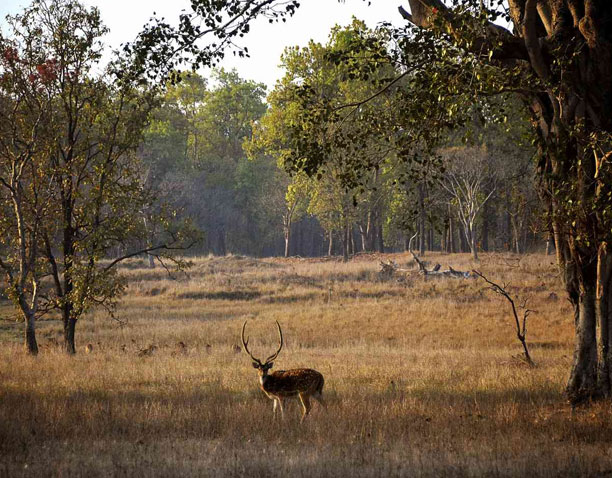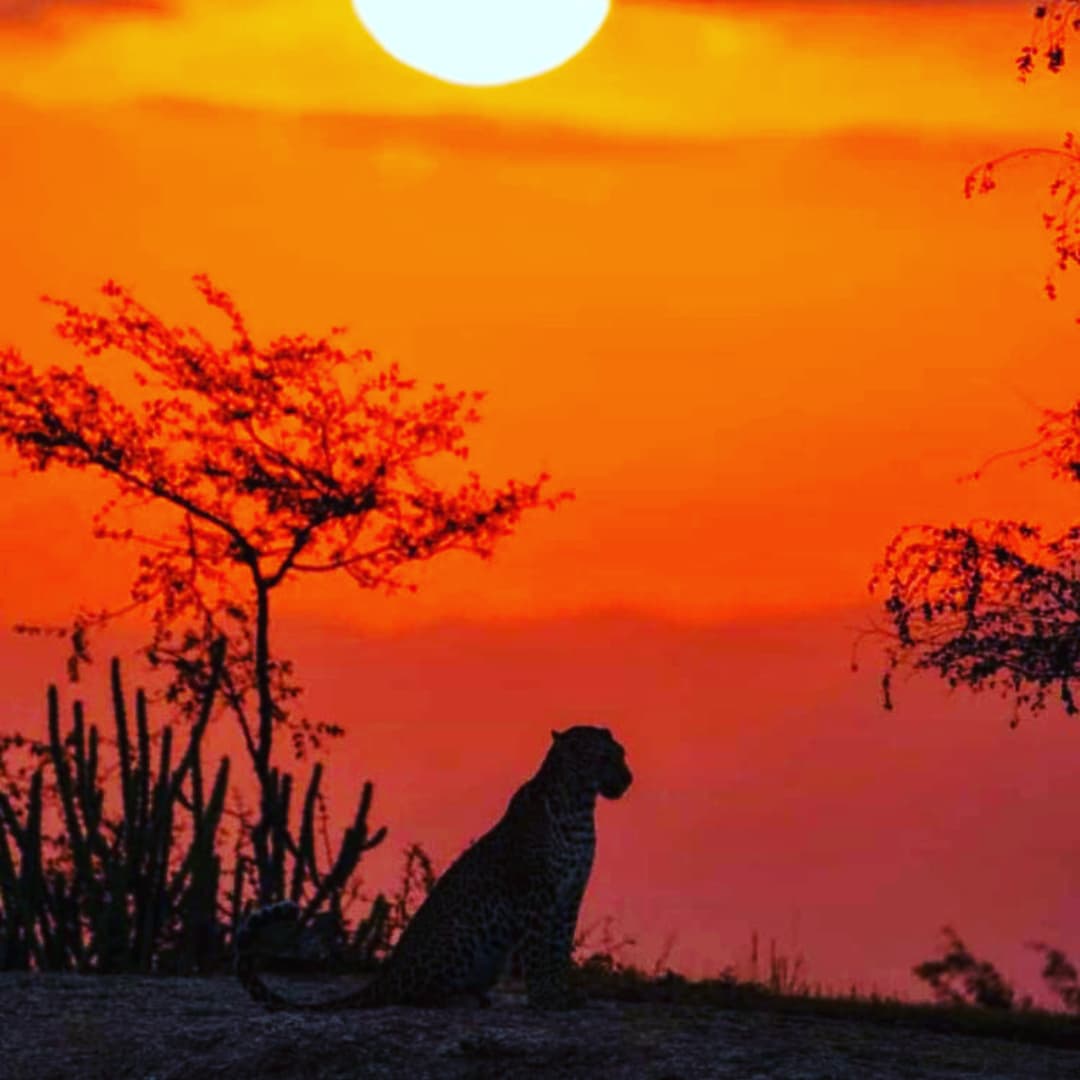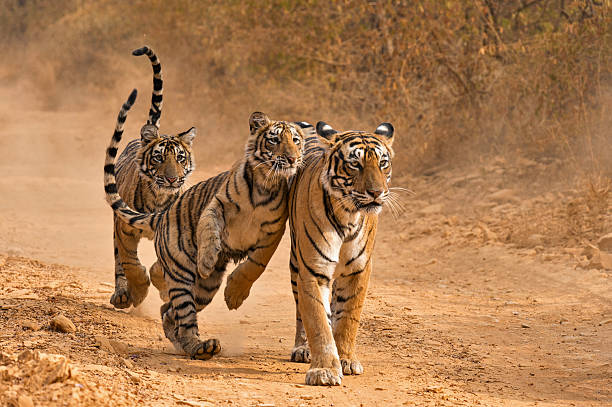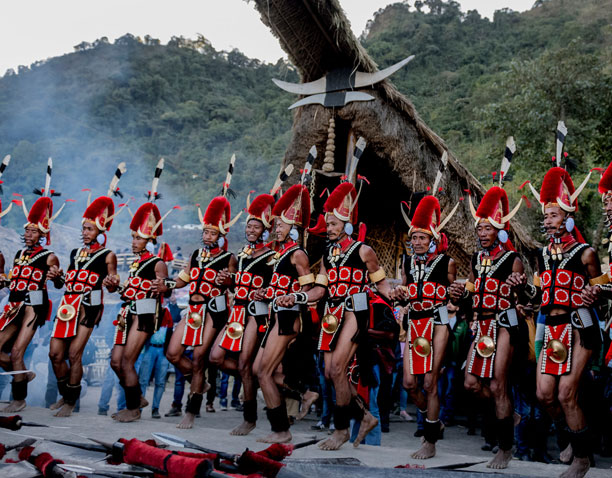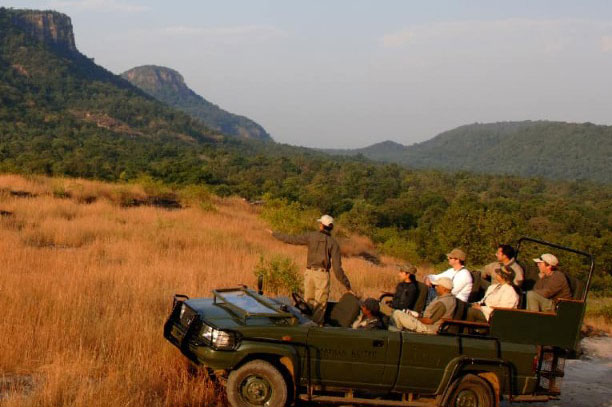At the very heart of India, an enchanting wilderness lies, serving as the backdrop for many of Rudyard Kipling’s famous tales. This wilderness, with its verdant forests stretching as far as the eye can see, sprawling grasslands that seem to touch the horizon, vibrant Indian wildlife that adds a dash of color and excitement, and the mesmerizing tribal culture that adds a unique charm, is a world filled with mystery, magic, and awe-inspiring beauty. Allow us to guide you on an adventure in India, a journey through this fascinating India nature, a realm that served as the real, tangible setting for Kipling’s famous tales.
The Vibrant Landscape – A Closer Look
The wilderness of Central India is a breathtaking mosaic of lush forests, winding rivers that snake their way through the landscape, and vast grasslands that seem to stretch on forever. This is the very land where Kipling spun his magical stories in his much-loved work, ‘The Jungle Book.’ Here, every nook and corner, every tree and stone, speaks of the adventures of Mowgli, the man-cub raised by wolves, his wise mentor Bagheera, the sleek black panther, and the affable, ever-friendly bear, Baloo. The landscape, with its unique features and characteristics, is as much a character in these stories as the anthropomorphic animals that populate them. This is the perfect place for safaris in India, where you can experience a real-life jungle safari.
The Wildlife – A Diverse Kingdom
This enchanting wilderness is home to an incredibly diverse range of wildlife. From the majestic Royal Bengal Tiger and the elusive Indian Leopard to the towering Indian Elephant and various species of deer, monkeys, and birds, the animal kingdom here is rich and varied. This rich animal kingdom served as the inspiration for the charismatic characters in Kipling’s tales. The Sher Khan, the Bengal tiger in ‘The Jungle Book,’ is based on the real tigers that roam these forests. Similarly, the other characters are inspired by the animals that inhabit this region, each with their unique traits and behaviors. Experience the thrill of an Indian safari or embark on India wildlife tours to witness these endangered species in their natural habitat, including the Indian pangolin, in the national parks and tiger reserves.
The Tribal Culture – A Rich Tapestry
Adding another layer of richness to the wilderness are the tribal communities residing in this region. These communities, a significant part of Planet India, live in harmony with nature, respecting and preserving the flora and fauna that surround them. Their colorful festivals, folk dances, and traditional art forms are a testament to their deep-rooted connection with the land. Kipling’s tales often touched upon the tribal way of life, showcasing their symbiotic relationship with nature and their deep respect for the environment.
The Environmental Conservation Efforts – A Ray of Hope
Unfortunately, like many wild spaces around the world, Central India’s wilderness faces threats from deforestation, poaching, and climate change. These threats pose a significant risk to the unique ecosystem that exists here. Yet, it’s heartening to see the concerted efforts by the government, non-profit organizations, and local communities towards the preservation and conservation of this unique ecosystem. Eco-tourism has emerged as a sustainable way to raise awareness and funds for conservation while allowing visitors to experience the enchanting wilderness firsthand. Visit a wildlife sanctuary or a nature reserve, engage in wildlife photography, or learn about initiatives like Project Elephant, the biosphere reserve, the national tiger conservation authority, and the wildlife act in these conservation areas.
Conclusion – A Living Testament
Central India’s enchanting wilderness is a living testament to Kipling’s famous tales. It’s a world where nature, wildlife, and tribal communities coexist in a delicate balance. It’s a world where fantasy meets reality, where every leaf, every creature, every footprint tells a story. As we strive to protect and preserve this wilderness for future generations, we are also preserving the real setting of Kipling’s timeless tales. So, the next time you read ‘The Jungle Book,’ remember, it’s not just a story, but a reflection of a vibrant, living world that exists in the heart of India. Embark on the best Indian safari, stay at a jungle retreat or a safari camp, and become a wildlife enthusiast exploring the Indian ecosystem through Indian wildlife tours.

